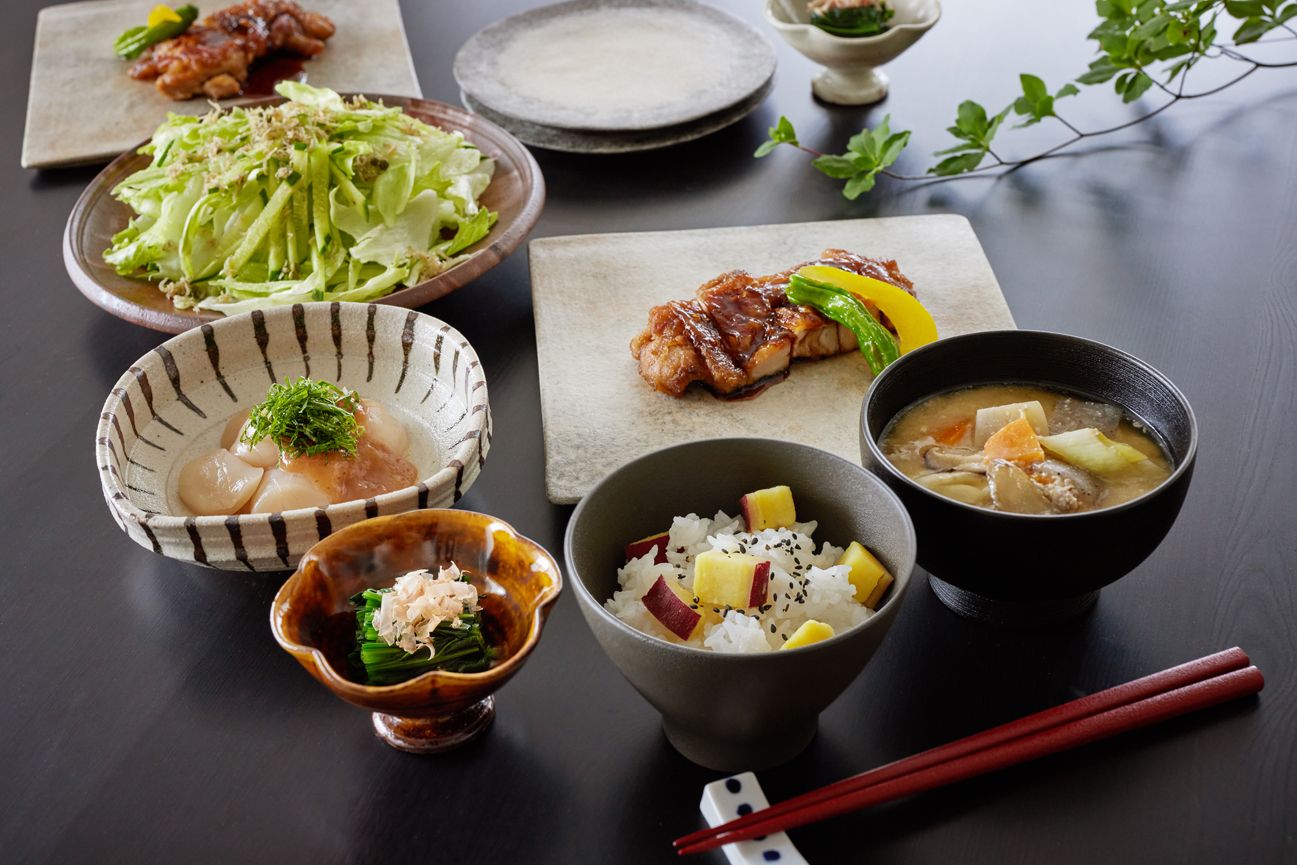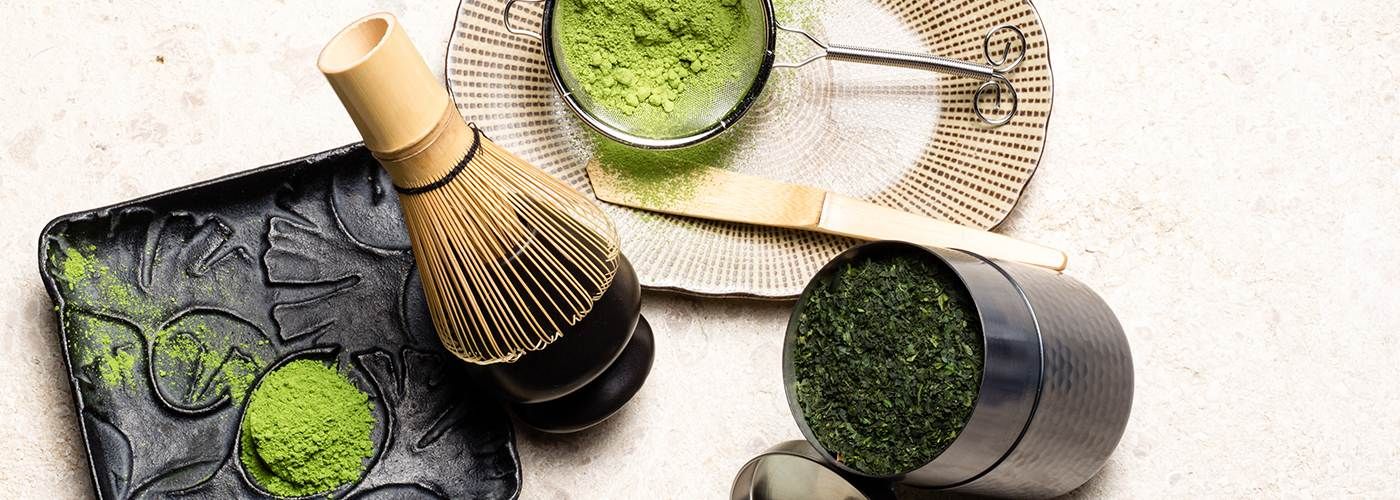
In the Sweet Spot—Roasted Sweet Potatoes Are Booming in Japan, Driven by New Varieties and New Cultivation and Curing Techniques.
I first catch sight of Sota Amaya standing outside a roasted sweet potato shop in a residential district in West Tokyo. Dressed in a bright red puffer jacket over a yellow sweatshirt, he is an eye-catching figure. This, it turns out, is his official uniform as a “Sweet Potato Ambassador.” Amaya makes a point of dressing in the colors of the tubers he represents when promoting them on TV, print or social media.
And Amaya is as bright and cheerful as the outfits he favors. That, however, was not always the case. “Ten years ago, the work at my job was brutal and the office politics even worse. One day, I was walking along the street, feeling pretty crushed by life, when I caught a whiff of roasted sweet potato in the air. So I went into the shop, bought myself one and ate it,” he explains.

“Sweet Potato Ambassador” Sota Amaya
The potato was a revelation. Its flesh was golden, creamy, soft and sweet and its taste infinitely superior to the rather dry sweet potatoes of Amaya’s childhood. Suddenly he realized that there were things in life that could still give him pleasure. For the first time in a long time, he felt hope.
Amaya had a new purpose and direction. He made it his mission to learn all he could about sweet potatoes (satsumaimo in Japanese) and track down the shops which sold them. In Japan, roasted sweet potatoes can be found in the food halls of department stores, in supermarkets and convenience stores. There was a lot to absorb. The taste of sweet potatoes varies according to their type and the terroir—the soil, topography and climate—where they are grown.
Among the areas Amaya studied was the history of the sweet potato. Sweet potatoes have experienced repeated surges of popularity in Japan over the last 300 years. The first such boom occurred in the eighteenth century when Japan was ravaged by a series of famines. The sweet potato, a food originally from Okinawa Prefecture, found favor because it was hardy enough to grow when all other crops failed.
The second boom occurred at the end of the late nineteenth century when Japan was in the throes of industrialization and the burgeoning urban population needed a cheap and easy source of calories.
The third boom played out immediately after World War II, when Japan’s cities were in ruins and its people poor and hungry. Not only could the sweet potato be grown on any vacant patch of land, its sweetness brought a welcome note of happiness into otherwise harsh lives.
Luckily for Amaya, his life-altering encounter with the sweet potato coincided with Japan’s fourth and ongoing sweet potato boom. This boom, which got underway in the early 2000s, is qualitatively different from its three predecessors. Forget about feeding the starving masses, this time sweet potatoes are back in demand due to their sheer deliciousness. New varieties, innovative cultivation techniques, more extended curing times and more sophisticated roasting machines mean that sweet potatoes simply taste better than ever.

Sweet potato roasting machine
To start our tasting session, Amaya and I try a couple of new varieties. One of the basic Okinawan potatoes is called the Beni-imo, or Beni potato. Now there are a whole range of tweaked varieties which have improved on it.

Beni-Haruka
The first potato we get our teeth into is the Beni-Haruka. The name means something like “Far Beyond the Basic Beni Potato,” and Amaya praises the variant for its softness, juiciness and syrupy sweetness.

Beni-Masari
This is followed by the Beni-Masari. This potato—whose name again means something like “Surpassing the Beni Potato”—is derived from the Beni-Azuma, a non-sweet potato. Amaya draws my attention to its mild sweetness and the suggestion of chestnut in the taste.

Anno-imo
Three is a lucky number, and the third potato we try is an Anno-imo, the very same variety that rescued Amaya from drudgery a decade ago. Suitably enough for a potato that brightened his whole outlook on life, it has orange flesh of an almost unbelievably cheerful vibrancy. It was the spread of the Anno potato and new variants that kicked of the whole fourth sweet potato boom.

Gorojima-Kintoki
Next on the menu is the Gorojima-Kintoki, a potato with a subdued sweetness and a fluffy texture that is a derivative of the Kokei No. 14 sweet potato. The Kokei No. 14 is native to Kyushu area, but the Gorojima-Kintoki is grown among sand dunes in Kanazawa on the coast of Ishikawa Prefecture in Honshu, further north. “Most sweet potatoes in Japan are grown in the coastal areas,” Amaya explains, “because that’s where the soil is richest in minerals.”

Murasaki-imo, the “purple potato”
The fifth and final potato on our tasting menu is the Murasaki-imo, which, true to its name, is purple inside and out. Murasaki-imo contain anthocyanins, the same pigments that are found in blueberries and red cabbage. Because the Murasaki-imo was not originally very sweet, recently new, sweeter varieties have been developed. Amaya, who likes its “subtle sweetness and transparent purple hue,” says it is delicious both roasted and when served in a potage mixed with milk and bouillon.
Rather counterintuitively, sweet potatoes are not actually sweet when they are freshly dug up. They need to be cured—stored in a controlled atmosphere—for between three months to a year before their sweetness comes out. Curing is the most crucial stage in the whole process—and the thing that makes Japanese sweet potatoes so special.
“First, the potatoes are stored for three days in 35℃ (95F) heat and 90% humidity. The cells recuperate and any unsightly damage to the potato’s exterior vanishes,” Amaya explains. “Next the potatoes are stored at a constant temperature of 15℃ (59F) for several months. This is when the action of amylase, an enzyme, converts the starch to sugar which is released upon roasting.”

The curing process takes between three and twelve months.
The Beni-Tenshi—“Angel of the Beni-imo”—a brand developed by a large potato wholesaler is an extreme example of the benefits of curing. It is cured for an entire year, resulting in a lush sweetness and a silky-soft mouthfeel.
One other novel feature of the fourth sweet potato boom is the use of marketing. As we have seen, producers give their potatoes brand names to make them distinctive and memorable to consumers. A potato variety grown in Oita Prefecture in Kyushu, rejoices in the name of Kanta-kun, or “Little Mister Sweet and Plump.” According to Amaya, Kanta-kun does indeed have a quite unforgettable luscious natural sweetness that lingers in the mouth.
So where should you go to enjoy these fourth-wave potatoes? Amaya’s top recommendation is Fuji, the specialty store where we met. Fuji, which opened in the early 2000s just as the fourth boom was taking off, is in Gotokuji, just 15 minutes’ train ride from Shinjuku in Tokyo. “Fuji is unusual. The owner, Mr. Uehara, stocks potato varieties from all over Japan, many of which not available in supermarkets. No other place I know has such a broad selection,” Amaya says.

Fuji, a specialist roasted sweet potato retailer in Tokyo
His second recommendation is Ginroku-imo. It’s a much newer venture, having only opened in November 2023. It too is in Tokyo, only one minute lfrom Nishikoyama Station on the Tokyu Meguro Line. Despite its trendy minimalist décor and sweet potato latte drinks, Ginroku-imo actually prepares its potatoes in the traditional eighteenth-century style, roasting them over charcoal in large earthenware pots (tsuboyaki). “Tsuboyaki really draws out the sweetness because you’re not heating the potatoes directly and it takes time. You roast them slowly for two hours, starting carefully at a temperature range of 70℃ to 90℃ (158 to 194F), and gradually increasing this to 180℃,” Amaya says.

Ginroku-imo, a specialty sweet potato store, roasts its potatoes in-store in traditional pots (visible in the foreground).

Ginroku potatoes roasting in a traditional earthenware pot
For the complete potato head, Japan has plenty of sweet potato snacks to enjoy on the go. As well as Hoshi-imo, dried slices of potato that you can munch on anytime and anywhere, there are honey-glazed sweet potato chunks with sesame seeds known as Daigaku-imo that go well with a glass of beer or wine of an evening.

Hoshi-imo

Daigaku-imo
When he is not roaming the streets in search of the perfect sweet potato, Amaya likes to cook with sweet potatoes at home. When he needs to go full-on comfort food, as well as the Murasaki-imo potage mentioned earlier, Amaya likes to make himself a gratin, slathering layers of sliced sweet potato slices with a rich meat sauce, then covering the whole thing with cheese and sticking it in the oven to bake.

Sweet potato gratin
But now my time is up. My audience with the ambassador is over. Before taking my leave, I ask him what message he has for the people of the world. What is Ambassador Amaya’s final communiqué?
“I just want people to enjoy eating sweet potatoes. That means enjoying everything about them—the different varieties, the different regions they grow, the different colors. Sweet potatoes are like wine. There is so much to learn, explore and enjoy,” he says.
Then, in a blur of red and yellow, Ambassador Amaya is gone.

Fuji
https://f-yakiimo.com
Ginrokuimo
https://www.instagram.com/ginrokuimo/
Amaya Sota “Sweet Potato Ambassador”
https://www.instagram.com/sota.amaya/






